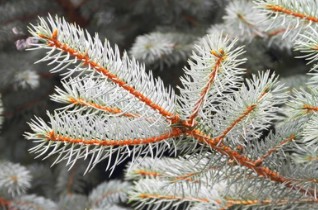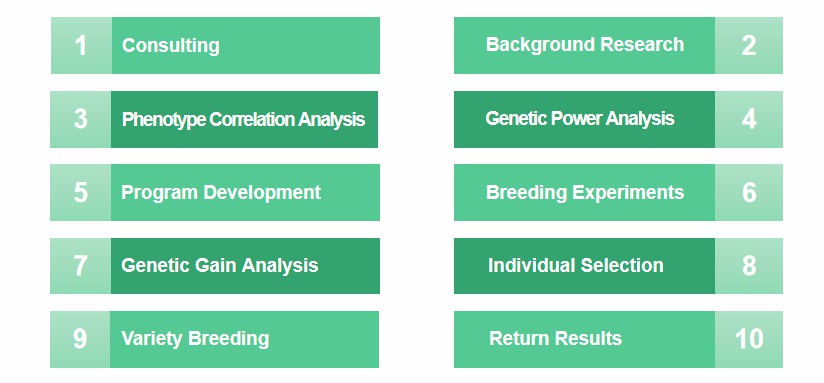
White spruce (Picea glauca, P. glauca) is an evergreen tree of the genus Pinaceae, spruce, up to 30 m tall. It is mainly distributed in Canada and the northeastern United States. It grows in moist, well-drained chalky soils from 0-1500 m above sea level, but it does not grow well on clayey, low-lying, and calcareous soil soils.
The wood of P. glauca is almost white to light brown in color, with medium to fine wood texture, straight and glossy, light and soft, without special odor, and with obvious growth rings. Easy drying, high dimensional stability, easy finishing, good gluing and painting, and poor nail holding power. Poor corrosion resistance and difficult to treat. The wood has excellent musicality and can be used for making music boards. Breeding programs have been initiated and developed in many countries to select P. glauca with more excellent characteristics.
Lifeasible, a biotechnology company with many plant geneticists and extensive experience in forest breeding, is committed to providing professional and customized Picea glauca breeding services. We will provide a variety of biotechnology to accelerate your breeding cycle.
P. glauca improvement breeding programs have typically focused on improving productivity-related traits; however, with climate change, there is increasing pressure to breed trees to improve the resistance of P. glauca to biotic and abiotic stresses. Insect resistance is the focus of our services. Our breeding techniques typically include the following.
Cell engineering breeding is mainly a method of breeding using techniques such as another tissue culture, protoplast culture, and somatic cell fusion and hybridization. First, we use plant tissue suspension culture and single cell culture techniques to grow P. glauca somatic cell embryos. Then specific mutant cells are screened by adding specific selection pressure to the culture medium for targeted selection, and favorable mutations are preserved. The plants are then asexually propagated and induced to produce new mutant P. glauca individuals that meet the breeding objectives.
In P. glauca hybrid breeding, our service advantage is that we will use flower induction treatment for P. glauca. Flower development is an essential stage in the growth and development process of forest trees. By promoting flowering, we can effectively shorten the traditional hybrid breeding cycle and process, thus significantly improving breeding efficiency.
P. glauca has been established as one of the models for conifer genomics. The genetic information of P. glauca has been studied by several authors. Genomic relationship matrices calculated based on multi-locus gene SNP marker information and conventional analysis of phenotypic data based on validated pedigree information are often applied to molecular marker-assisted breeding in P. glauca. Molecular marker-assisted selection selects for genotypes of target traits by analyzing the genotypes of molecular markers closely linked to the target genes with the help of molecular markers. Molecular marker-assisted breeding shortens breeding years, speeds up the breeding process, improves breeding efficiency, and overcomes many difficulties in conventional breeding methods.

Lifeasible's breeding experts combine molecular breeding technology with cell engineering technology to establish a molecular breeding system for high-throughput genotype identification and progeny screening suitable for cell engineering breeding and explore selection strategies to accelerate the breeding process, aiming to help you obtain new P. glauca varieties with improved disease resistance, insect resistance, drought resistance, high yield, quality, and other aspects mentioned. If you have any questions about our P. glauca breeding services, please contact us.
References
Lifeasible has established a one-stop service platform for plants. In addition to obtaining customized solutions for plant genetic engineering, customers can also conduct follow-up analysis and research on plants through our analysis platform. The analytical services we provide include but are not limited to the following:
Get Latest Lifeasible News and Updates Directly to Your Inbox
Adaptive Evolutionary Mechanism of Plants
February 28, 2025
Unraveling Cotton Development: Insights from Multi-Omics Studies
February 27, 2025